Encompassing 260,000 square miles, Patagonia is a vast region of awe-inspiring mountains, crawling glaciers, and wildlife-filled grasslands spanning the southern ends of both Chile and Argentina. And though it stretches more than 15 degrees of latitude, in our experience, when travelers ask which side of Patagonia to travel to, they’re really asking where they should go in southern Patagonia. This is, after all, where the region’s most iconic landscapes and landmarks are found: The Paine Towers (Torres del Paine National Park, Chile), and Mount Fitz Roy and Perito Moreno Glacier (Argentina).
Which side of Patagonia to travel to?
On a dedicated Patagonia itinerary, Extraordinary Journeys South America specialists answer the “which side of Patagonia” query with an enthusiastic “Go to both!” Each is worthy of visiting and has qualities that are shared and unique, influenced by culture and topography. However, when time is finite, or travelers have specific interests, calling on just one side of Patagonia might be the practical choice.
In this guide, we will parse out the distinct appeals of Chilean Patagonia and Argentine Patagonia to help determine which side of Patagonia to travel to while also encouraging travelers to look north and to the far south—beyond the region’s most famous sites.
Note: this guide offers a broad overview of Patagonia; it is not an exhaustive dissection of every destination. Rather, we’ve outlined the places that someone might visit on a first or second trip to the region.
Define your interests
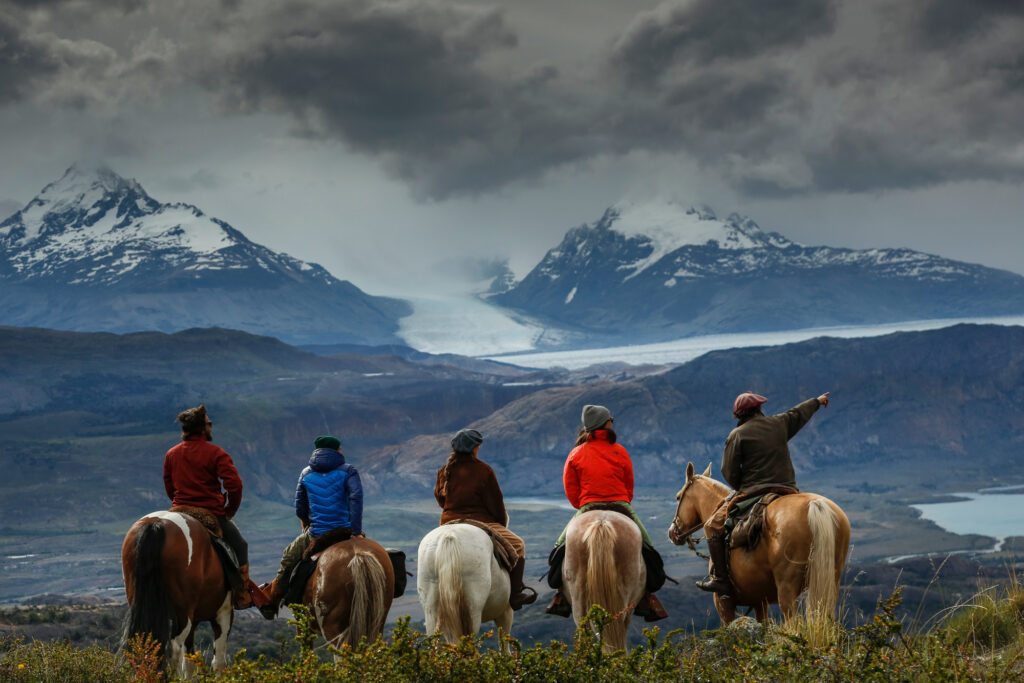
With spectacular landscapes, land’s-end frontier culture, and captivating wildlife, it’s easy to see why both Chilean and Argentine Patagonia beckon to outdoorsy travelers. Depending on your interests and what you want to experience, one side may be better aligned with your travel goals.
First, take time to think about what you want to see and do in Patagonia. Do you want to spend all your time on hiking trails? Do you hope to cross a once-in-a-lifetime wildlife sighting like orcas or pumas off your list? Do you want to hop in the saddle to get a taste of that Patagonia pioneering spirit while staying at one of the region’s many family estancias (ranches) and sheep farms? Does your heart yearn to hunker down in a design lodge, or do you prefer to glamp in an Andean forest? Would you prefer to road trip the Carretera Austral or cruise along Chile’s fjord-pocketed coast? From skiing to fly fishing to kayaking, there’s no shortage of things to do in Patagonia but identifying your interests will help point you toward the right destination(s).
With this information, we can create the perfect Patagonia adventure tailored to your personal preferences and interests. And if you’re not sure, that’s fine, too. We’re more than happy to save you hours of research during a discovery call where we can get to know you better.
Once you’ve broadly outlined your interests, read on through the following sections. Timing, whether you plan to travel more widely in Argentina/Chile/South America, trip logistics, and other variables may very well skew whether Chilean Patagonia or Argentinean Patagonia is the better choice for you.
Where else are you planning to go?
If Patagonia is only one stop on a broader South America luxury itinerary, connections to other destinations may well determine which side of Patagonia is the more intuitive choice.
For example, travelers interested in wine tasting in Mendoza are more likely to visit Argentine Patagonia. Those who also want to experience the starry mysticism of the Atacama Desert might journey to Torres del Paine via Santiago. Traveling within a single country isn’t a rule but when time is a limiting factor, it tends to emerge as a likelihood.
Argentine Patagonia: Known for mountain peaks, glaciers, ice fields, estancias, and “The End of the World”
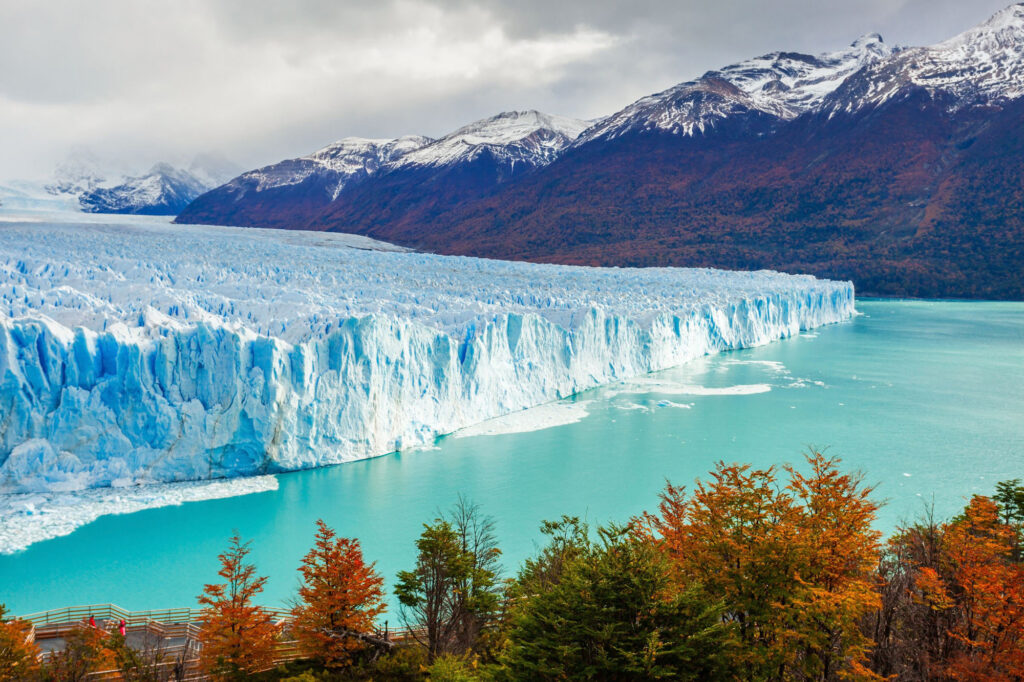
One of the biggest reasons to visit Argentine Patagonia is the region’s renowned glaciers and ice fields; so much so that the area’s premier national park, Los Glaciares National Park, is named for these must-see feats of nature. (Seeing the glaciers ranks among the best things to do in Argentina.)
Although the park is home to 47 glaciers, the best-known is the massive Perito Moreno Glacier: a 19-mile-long, three-mile-wide behemoth extending out from the Southern Patagonian Ice Field. Emptying into a turquoise lake and surrounded by snowcapped mountains, it’s one of the top sites in Los Glaciares National Park and Argentine Patagonia overall. Viewing platforms overlooking the terminus of the glacier give visitors a front-row view of calving events as icebergs slough off the front wall of the glacier. Boat tours navigate the iceberg-filled waters of the lake, and it’s even possible to go trekking on the glacier itself. Perito Moreno is accessed via the town of El Calafate.
Known as the trekking capital of Argentina, the quaint small town of El Chaltén sits within the boundaries of Los Glaciares National Park. Due to its proximity, you can start hiking straight from town to viewpoints of the Torres Glacier, the Laguna de los Tres, and the ice-covered slopes of Mount Fitz Roy. (You’d recognize this toothy peak as the logo of the clothing brand Patagonia.)
Another highlight of Patagonia is visiting “The End of the World.” Though the Tierra del Fuego archipelago is technically shared by both countries, Ushuaia claims the title of “southernmost city in the world”—and lies within Argentine Patagonia. Located just 600 miles north of Antarctica, it’s a place that emotes a strong “Land’s End” vibe. Scenic days are spent cruising the Beagle Channel, which teems with marine life, hiking in Tierra del Fuego National Park, and dining on pulled-fresh-from-the-ocean king crab.
In the north of Argentine Patagonia is the Lake District. Visitors often anchor their trips to Nahuel Huapi Lake, a national park of the same name, and the lakeshore town of Bariloche. Set in the foothills of the Patagonian Andes and encircled by volcanic peaks, there’s plenty of hiking, biking, kayaking, fishing, and river rafting in summer. In winter, snow-covered hills attract skiers and snowboarders. Argentine Lake District is easily paired with Chile’s Lake District but is distinctly drier due to a rain shadow effect that drops moisture on Chile before rising over the Andes.
Chilean Patagonia: Known for trekking, a daisy chain of national parks & rugged remoteness
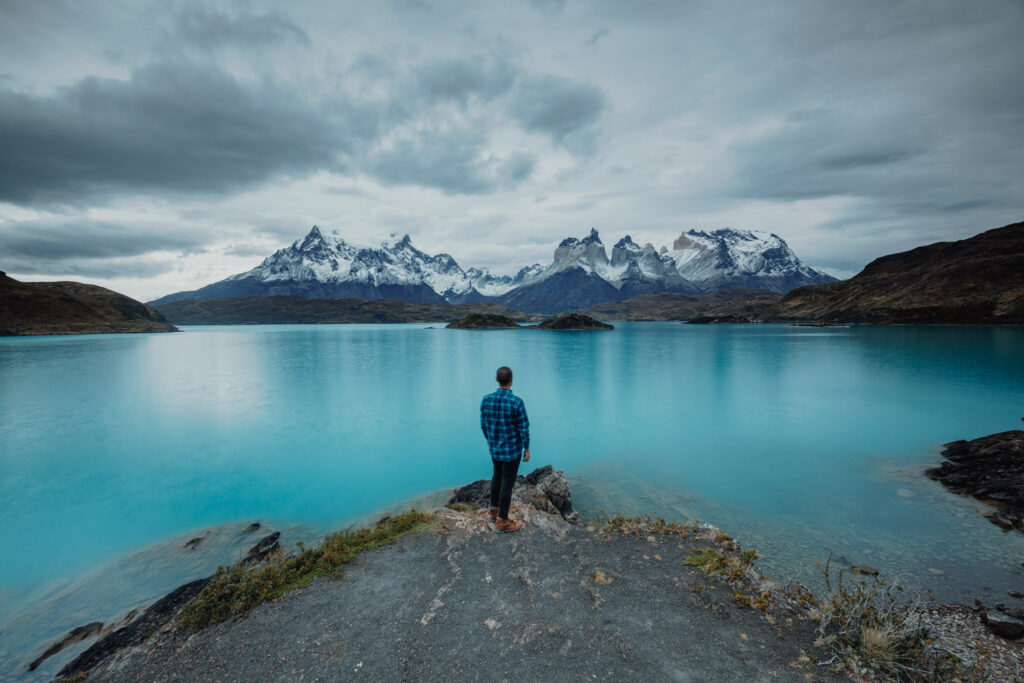
If you were to conjure Patagonia in the mind’s eye, it’s Torres Del Paine National Park’s three granite spires that probably spring to mind. Images of Paine Towers are so ubiquitous that it’s easy to imagine they alone have inspired many a trip to Patagonia. During the relatively warm and breezy summer months, hikers come from across the globe to tackle the park’s famous multi-day routes like the W Trek—which winds in a ‘W’ shape through the Paine Massif mountain range—or day hikes like the Base of the Torres trek. Crisscrossed with trails, Torres del Paine offers endless places to explore, heading to viewpoints of the Grey Glacier as condors swirl overhead or trekking through the grassy park interior looking for guanacos and pumas.
Torres del Paine, famous as it is, is just one of 42 national parks in Chile, 17 of which, form a daisy chain through Patagonia. Extending from the Lake District, 1,700 miles south to Cape Horn, the Route of Parks makes it easy to get off the beaten track to choose trails less trekked.
In northern Chilean Patagonia, the Aysen region is packed with natural wonders and national parks, and yet, sees far fewer visitors than southern Patagonia. Notably, it’s home to the newly created Patagonia National Park, a rewilding triumph story, with vast valleys and plains restored from grazing grounds to wild spaces for native wildlife. Base yourself at an Aysen eco-lodge for invigorating adventures to turquoise lakes, unspoiled valleys, and pampas-adorned hills.
Further north, Chile’s Lake District is a scenic tangle of glacial lakes overseen by snow-capped volcanoes and threaded by rivers, streams, and hot springs. From hiking ancient araucaria forests (monkey puzzle trees) to river rafting, canyoning, fishing, and mountain biking, it’s an ideal escape for rugged adventure and laid-back, woodsy relaxation. Chile’s lush, emerald Lake District offers a contrast to Argentina’s Lake District, though both are easily visited on a single luxury Patagonia travel itinerary.
Combining Argentinean and Chilean Patagonia
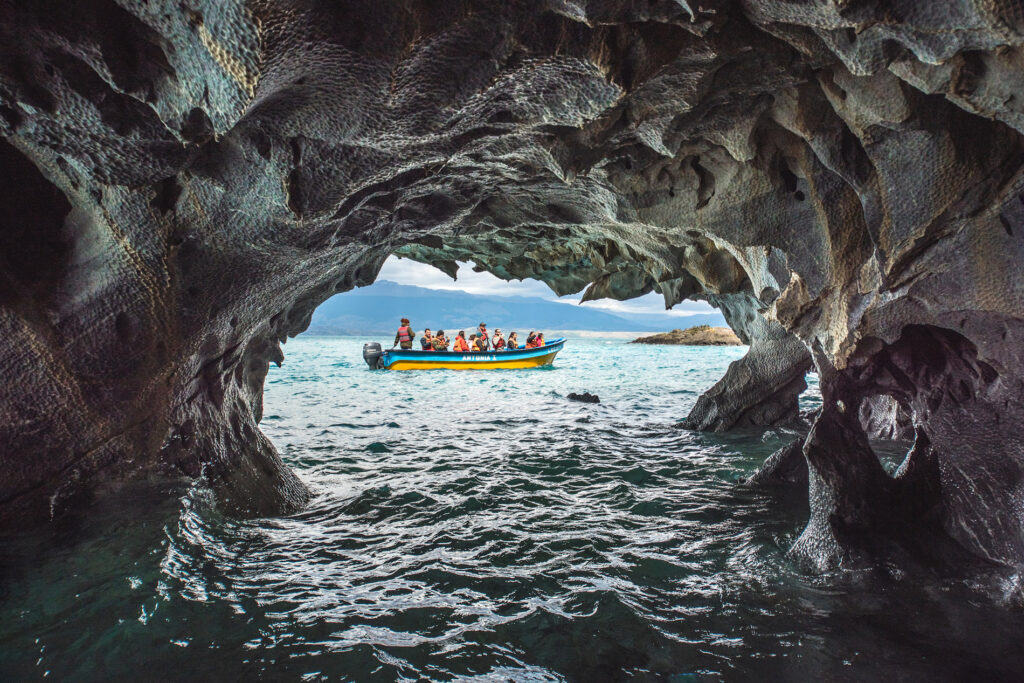
With so much to see and do, it may feel like there’s not enough time to fully appreciate and experience both Chilean and Argentine Patagonia in one trip. But if you’re already making the journey to the tail end of South America, you may as well go all out. Plus, the proximity of many popular areas to one other, like Torres del Paine in Chile and Los Glaciares in Argentina, makes it even more convenient and easy to see both in a single visit. However, it’s important to note that there aren’t cross-border hopper flights within Patagonia. From a regional airport, transfer via shuttle or car rental to your hotel or lodge. Depending on where you’re going, expect anything from a 10-minute to five-hour drive.
Our two-country Patagonia itineraries offer a glimpse into both sides of the region, hitting the highlights and maximizing time spent exploring. On itineraries like the South America’s Patagonian Highlights and Adventurous Argentina and Chile, you get the best of both regions, like hiking in Torres del Paine, staying in an Argentine estancia, and trekking on the Perito Moreno Glacier. Keep in mind that Extraordinary Journeys plans private luxury travel that is entirely bespoke. Just like our clients, no two trips are the same.
Which side of Patagonia to travel to: Wildlife and Nature
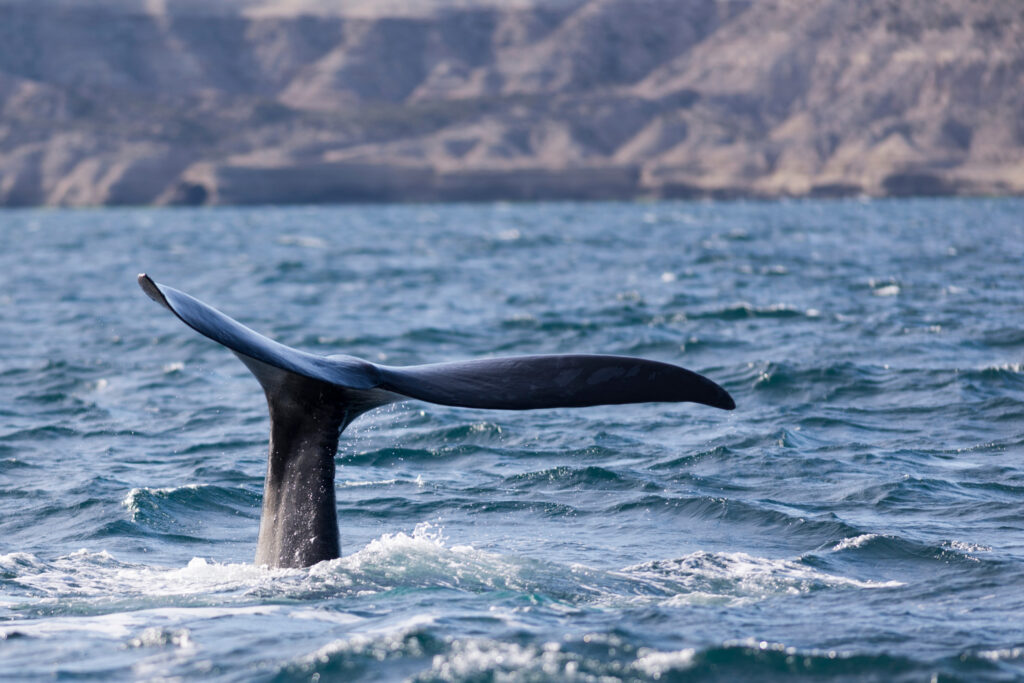
Both sides of Patagonia offer wildlife encounters and sightings, from whales to big cats.
In Chile, with patience and dedication—and a dash of luck—you might spot pumas roaming the grasslands of national parks like Torres del Paine and Patagonia National Park. Guanacos and condors are common sightings around both Torres del Paine and Los Glaciares National Park in Argentina.
On Argentina’s Atlantic Coast, the Valdés Peninsula is a veritable treasure trove of marine wildlife sighting opportunities. Watch as orcas and southern right whales swim close to shore, snorkel among sea lions (visit between February and April to see the young pups) and get up close to colonies of Magellanic penguins and elephant seals. Orca sightings on the Valdés Peninsula are a special treat, as it’s the only place in the world where orcas beach themselves to hunt baby seals. This area is also a bird-watchers paradise, with more than 180 species including Darwin’s rhea and Austral flamingos.
Near Punta Arenas in Francisco Coloane Marine Park (Chile), it’s possible to see migrating humpback whales during the summer months.
Fans of everyone’s favorite non-flying bird can find them in both countries. Off Ushuaia, in the Beagle Channel, you have a chance to spot Magellanic and rockhopper penguins, Peale’s dolphins, sea lions, fur seals, minke whales, and all manner of birdlife. In Chile, pay a visit to Los Pingüinos Natural Monument. Encompassing two islands in the Strait of Magellan, this reserve protects a massive nesting colony of Magellanic penguins. Visit between October and March when the penguins hunker down for breeding season, with chances to see young chicks during December and January. Best of all, meandering paths crisscross the colony, allowing you to get close to the wildlife.
Which side of Patagonia to travel to: Weather and seasons
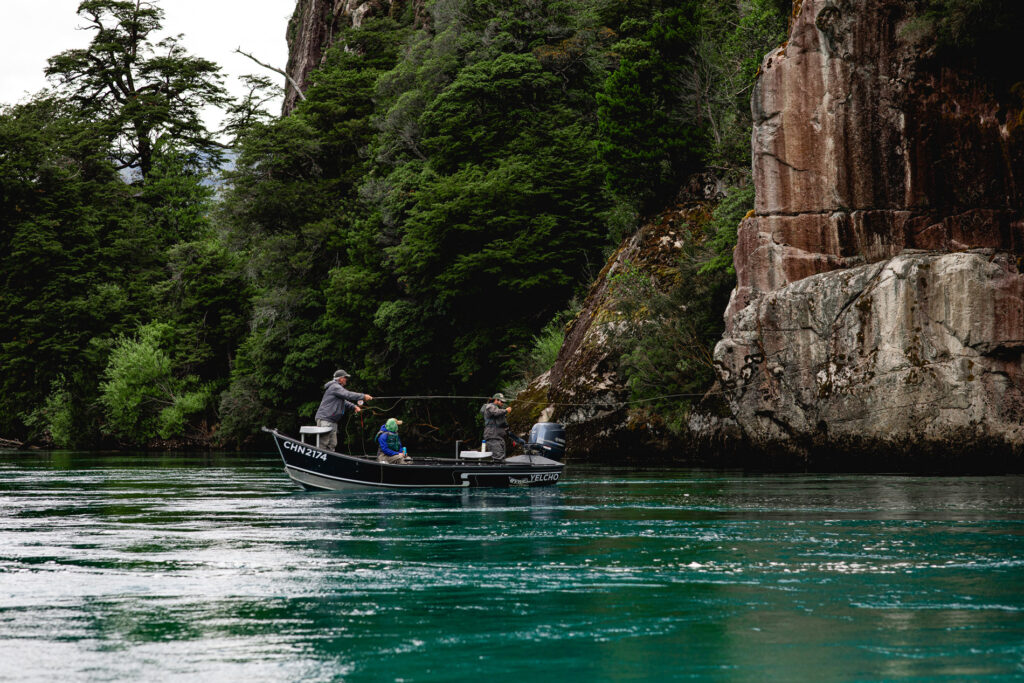
Summers in southern Patagonia are generally warm and sunny, though winds can be hair-whipping. While spring and fall can bring some rain, the weather is still conducive to outdoor adventure. Although the region is cold and experiences snowfall during the winter, a blanket of flurries transforms it into a veritable winter wonderland. The Lake Districts of both countries are milder by comparison. With a distinct snow sports culture, they attract visitors year-round.
For both Argentine and Chilean Patagonia, summer marks the high season. You have the best chances of good weather and longer days to pack more activities into your day, but you might be sharing the trails and scenic viewpoints with many others. However, the spring and fall shoulder seasons can be equally good times to visit—a bit chiller but conditions are generally still sunny and pleasant. Popular destinations like Torres del Paine and Los Glaciares are significantly less crowded, and you get the chance to experience seasonal happenings, like spring newborns and fall foliage.
Winter is the quietest time to visit, with very few tourists. In the past, many hotels and attractions closed for the season, but increasingly, more properties are operating through the chilly season. Against the stark white snow, animals pop into greater focus, making it a satisfying time to go wildlife watching.
Regardless of the month, Patagonia’s varied topography and orography means the weather can be unpredictable. One minute it can be bright and sunny, and the next, a storm has moved in. This can happen any time of the year, which is why it’s important to wear layers and pack for all four seasons. Another thing to be aware of is the region’s notorious wind. Patagonia sits right at the latitude of the Roaring Forties and Furious Fifties, which are strong westerly gales that race off the Pacific Ocean and tear across the landscapes at speeds of up to 100 miles per hour. These winds can occur throughout the year as well but can get especially strong during summer.
Click to read more about The Best Time to Visit Patagonia, including a month-by-month guide.
Which side of Patagonia to travel to: Accessibility and transportation
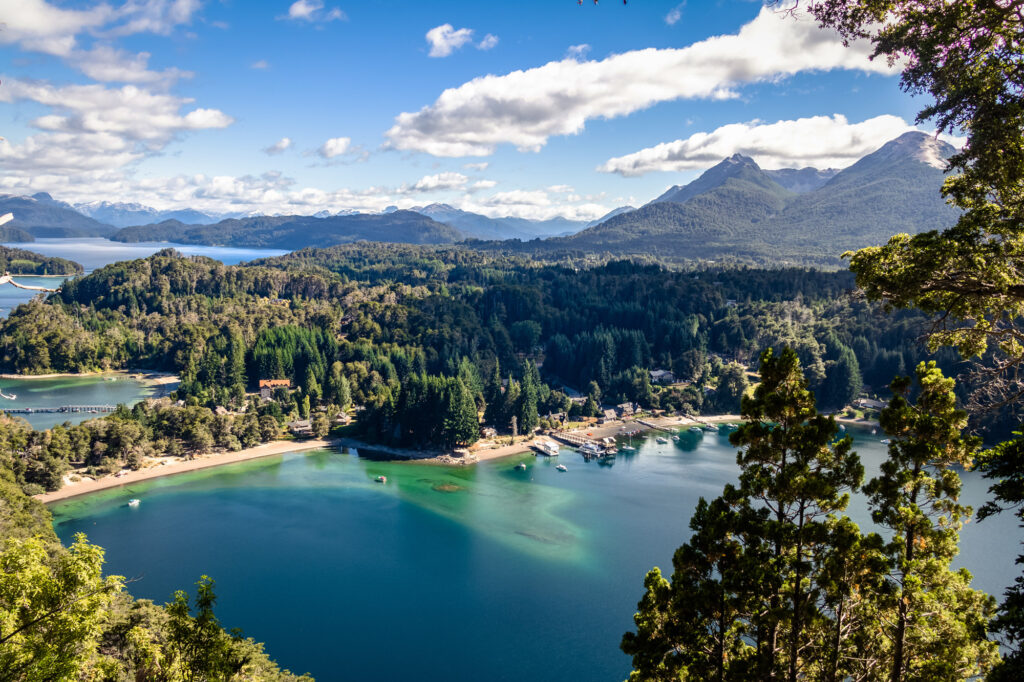
Reaching both southern Chilean and Argentine Patagonia is relatively easy thanks to direct, domestic flights (~two to three hours) from the capital cities of Santiago and Buenos Aires. Towns like Puerto Montt, Punta Arenas and Puerto Natales in Chile and Bariloche, El Calafate, and Ushuaia in Argentina act as entry points to the region. However, it’s important to note that there aren’t cross-border hopper flights within southern Patagonia.
From a regional airport, travelers transfer via shuttle or car rental to their lodge or hotel. Depending on where you stay in Chile, the drive can take two-and-a-half to five hours. On the Argentinian side, the transfer to El Chaltén is three hours, and to El Calafate, it’s only 20 minutes. If you fly to Ushuaia, you will be just 10 minutes from the city.
With its vast spaces laced by horizon-to-horizon highways and roads, Patagonia is a dreamy destination for road trips. If you want to explore Chilean Patagonia by car, a great place to start is the Carretera Austral. Starting at the bottom of the Chilean Lake District and running the length of the Aysen region, this 770-mile-long highway hits many of northern Chilean Patagonia’s greatest hits, including Patagonia National Park, Cerro Castillo National Park, the Marble Caves, and more. Using the Carretera Austral, you can also visit many of the parks along Chilean Patagonia’s Route of Parks. Although the Carretera Austral ends in Villa O’Higgins, Route 9 picks up further down the coast, connecting Torres del Paine to Puerto Natales and Punta Arenas.
Running adjacent to the Andes and stretching from the top of Argentina to the bottom, Route 40 is a legendary route popular with overlanders, but sections of it can be experienced as a Patagonian road trip—especially Argentina’s Lake District. This postcard-pretty region offers road trippers ample opportunities to pull over and seek out waterfalls, picnic on a lakeshore, and nip into restaurants to get a taste of the area’s strong central European influences.
And it’s just not planes and cars; in Tierra del Fuego at the very bottom of Patagonia, you can travel between Argentina and Chile via boat or ferry, heading along legendary waterways like the Strait of Magellan and the Beagle Channel between Punta Arenas and Ushuaia.
7 Reasons both sides of Patagonia are truly impressive
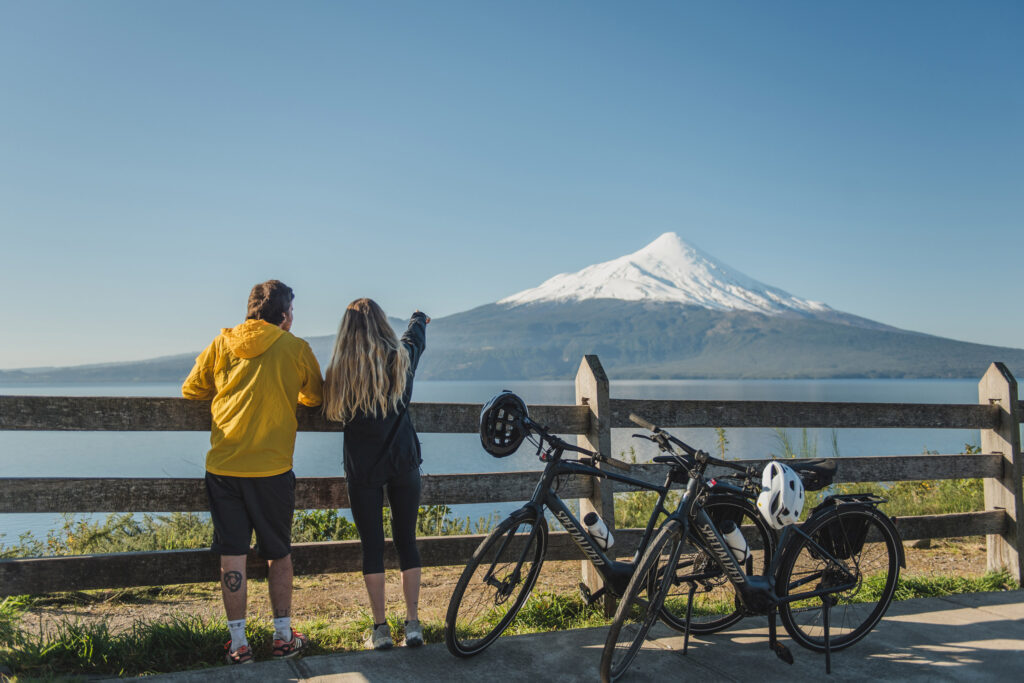
No matter which side of Patagonia you travel to, you’ll have an unforgettable experience, thanks no less to a combination of reasons described below.
1. Untouched natural beauty
Patagonia is home to some of the most spectacular landscapes on Earth. Within just one region, you can see crown-like mountain summits, colossal ice fields and glaciers, winding fjords, wind-swept grasslands, misty temperate rainforests, and sunny beaches. No matter where you travel in the region, the landscapes are sure to wow you.
2. Ease of access compared to other destinations
Although Patagonia may feel far-flung—and indeed, you are traveling to the very bottom of South America—it’s actually easier to reach than you may realize. Hopping on a direct flight from either Santiago in Chile or Buenos Aires in Argentina, you can be down in Patagonia within three hours.
From gateway airports like Punta Arenas and El Calafate, everything from national parks to popular points of interest are either within driving distance or can be reached within just a few hours by car. Rather than taking multiple days and flights to hopscotch around large areas when visiting other wilderness destinations like Africa, you can be at your hotel and start your adventure within a day. Plus, the international journey to and from home doesn’t involve crossing as many time zones.
3. Adventures galore
From whale-watching off the Valdés Peninsula or ice-trekking on glaciers in Argentina to hiking in Torres del Paine or roaming the pampas on horseback in the company of real-life gauchos, the wilds of Patagonia are a veritable playground of outdoor adventure. There are endless ways to explore this region: from the seat of a mountain bike zooming down gravel roads, from the saddle of a horse, in a kayak down glacier-fed rivers, and on your own two feet.
4. Cultural richness
Visiting Patagonia, you’ll find far more than incredible landscapes and outdoor adventure. The area is home to a unique history and culture, spanning from Indigenous inhabitants like the Selk’nam to the introduction of sheep farms and estancias in the 1800s. Travel to the islands of Chile’s Chiloé archipelago to learn about storybook myths and legends, with tales told of ghost ships, forest-dwelling trolls, and witch covens. Follow in the footsteps—or rather, hoof-prints—of the gauchos of Argentina, staying at historic estancias where you can go horseback riding, watch sheepshearing and corralling demonstrations, and eat and drink traditional ranching cuisine like drinking mate and eating roasted lamb.
5. Gastronomic delights
It may surprise you, but this remote region at the bottom of the world is an unexpectedly diverse and delicious culinary destination. The frigid waters are a bountiful breeding ground for giant Santolla king crab, which you can dine on whole or baked into a savory chupe de centolla casserole-style dip made with cheese and chunks of bread.
At estancias in both Argentina and Chile, you can try the classic Patagonian dish cordero al palo, which is a spit-roasted lamb cooked to perfection over an open fire. Guanaco and trout are also menu mainstays in these parts.
Argentina even has a very small volume of Patagonian wine production; pinot noir and malbec make up the lion’s share. Counting 9,000 acres of vineyards (two per cent of the country’s total output), sipping a regional vintage is a splendid way to imbibe the Patagonian terroir.
And before you leave, be sure to eat some local Calafate berries; legend has it that anyone who eats these wild fruits will return to Patagonia someday!
6. Warm hospitality
The landscapes and weather of this rugged, remote region may be harsh and challenging at times, but the locals are anything but. On both sides of the border, Patagonians welcome visitors with open arms, excited to share their beautiful home region and way of life with travelers. Become part of the close-knit Patagonian community for a few days as you bond with your guide on hiking treks and chat with locals at bars and restaurants in towns like Puerto Natales and El Chaltén.
That warmth and hospitality also extends to the places you stay. In both Chile and Argentina, you’ll find luxury hotels and properties where the highest standard of care and attention makes you feel like you’re right at home.
7. An increasingly rare glimpse of true wilderness
Pure, untouched wilderness can be hard to find these days, but it exists at the bottom of the world in Patagonia. Due to its extreme isolation, this region has been largely undeveloped, with great swathes of it protected as national parks and wilderness reserves. Towns and ranches are few and far between in the vast expanses, accessed by seemingly endless stretches of road. If you want to explore a place that feels truly unchanged by man, you’ll find it in Patagonia.
Explore Patagonia on a map
Some of our favorite luxury Patagonia trip itineraries
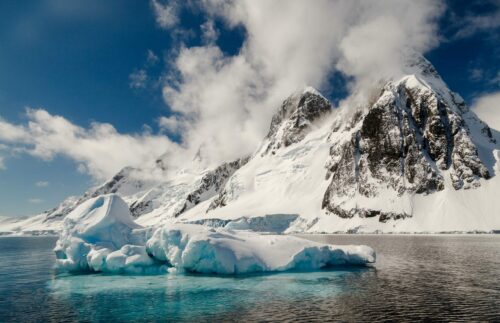
- Itinerary
Antarctica & Patagonia Explored
Dramatic landscapes in Patagonia and the untouched Antarctic realm

- Itinerary
Grand Tour of Argentine Patagonia
The untamed beauty of Patagonia: from Tierra del Fuego to the Northern Lake District
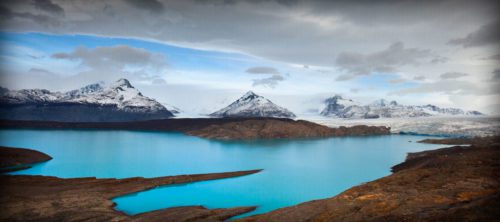
- Itinerary
Adventurous Argentina & Chile
Glaciers, Lakes and Peaks Of Patagonia
Some of our favorite luxury lodges in Patagonia
Keep reading about Patagonia
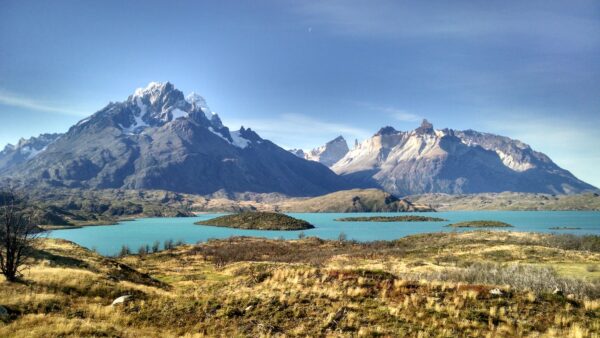
The Best Time to Visit Patagonia
Notorious for its four-seasons-in-a-day weather, Patagonia is a region where the answer to…
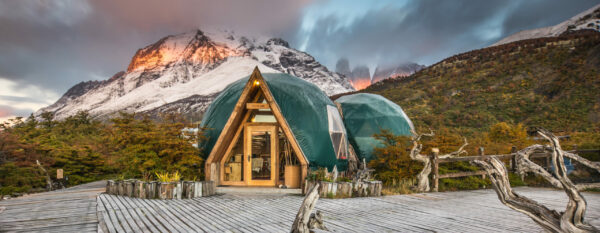
Best Family Vacations in South America
An archipelago teems with curious creatures; a serpentine jungle river reveals a…
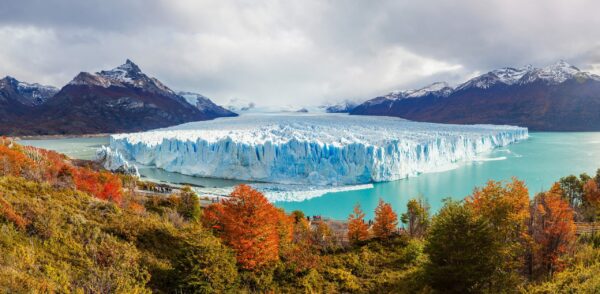
The Best Hikes in South America
Are you ready for the hike of a lifetime? Check out our top picks for the best hiking in…
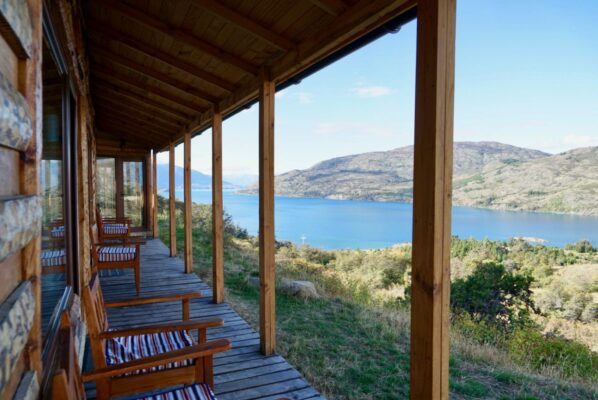
The Best Ecolodges in Chile’s Aysén Region
Whether it’s through investing in conservation initiatives, operating with a light…
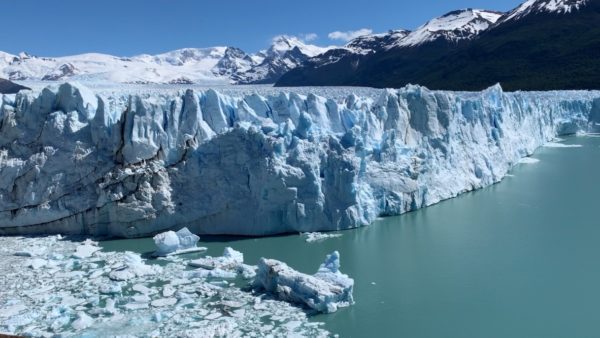
Southern Patagonia: What You Need to Know Before You Go
Discover 7+ reasons why Southern Patagonia’s stunning landscapes and active adventures…
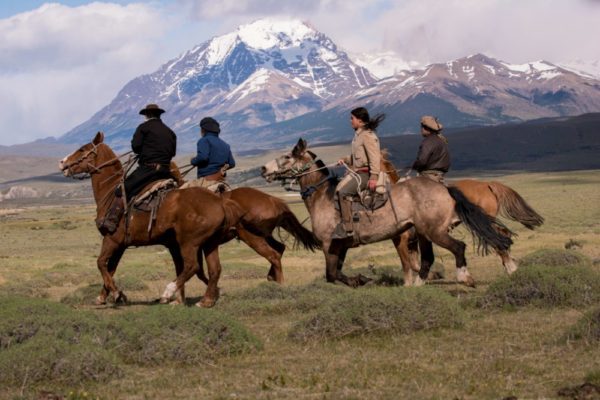
The 5 Best Luxury Hotels & Lodges in Patagonia
Discover 5 of the most incredible luxury properties in Patagonia. They’re ideally suited…
 Emma Fritz
Emma Fritz










